|
Books Should Be Free Loyal Books Free Public Domain Audiobooks & eBook Downloads |
|
|
Books Should Be Free Loyal Books Free Public Domain Audiobooks & eBook Downloads |
|
Fiction |
|---|
|
Book type:
Sort by:
View by:
|
By: Paul Laurence Dunbar (1872-1906) | |
|---|---|
 Fanatics
Fanatics
This is a story about a town in Ohio during the civil war. The town is divided by ideology, but can they be united by love and respect? - Summary by Stav Nisser.Note to listeners: Because of the subject of this book, some of the ideas described and the words used can be offensive. | |
By: Paul Leicester Ford (1865-1902) | |
|---|---|
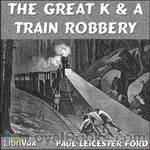 The Great K and A Train Robbery
The Great K and A Train Robbery
In this short novel the narrator is a superintendent on the K. & A. railroad, sometime in the late nineteenth century. The train is robbed somewhere in the Arizona desert. Various adventures involve this young superintendent. Romance is provided by a comely passenger. | |
By: Pauline Elizabeth Hopkins (1859-1930) | |
|---|---|
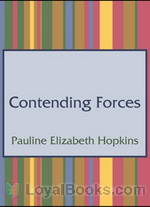 Contending Forces
Contending Forces
Pauline Elizabeth Hopkins, despite an impressive record of productivity and creativity as a novelist, playwright, short fiction writer, editor, actress, and singer, is an African-American woman writer who has essentially been consigned to the dustbins of American literary history. Though contemporary with Frances Ellen Watkins Harper, Charles W. Chesnutt, and Paul Laurence Dunbar, Hopkins is only now beginning to receive the kind of critical attention that Harper has enjoyed for a slightly longer period and that Chesnutt and Dunbar have always had... | |
 Hagar's Daughter. A Story of Southern Caste Prejudice
Hagar's Daughter. A Story of Southern Caste Prejudice
Hagar's Daughter was first published serially in "The Colored American Magazine" in 1901-1902 by Pauline E. Hopkins, a prominent African-American novelist, journalist, historian, and playwright. The book was described as "a powerful narrative of love and intrigue, founded on events which happened in the exciting times immediately following the assassination of President Lincoln: a story of the Republic in the power of Southern caste prejudice toward the Negro." (From the January, 1901, issue of "The... | |
By: Payne Erskine | |
|---|---|
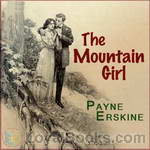 The Mountain Girl
The Mountain Girl
A delightful love-story, genuinely American in feeling and treatment. The story is stirring, the heroine is ideal. | |
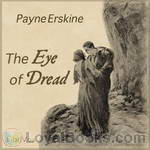 The Eye of Dread
The Eye of Dread
The Civil War is upon the United States, and the town of Leauvite has sent away its young men, among them Peter Junior and Richard Kildene. When they leave, Betty Ballard is but a child, but by the time the war has ended, she has become something else entirely. Wounded, Peter Junior finds his time at Betty's father's studio, learning to become an artist, until one day he proposes to her after deciding to go to France. Of course, she agrees to wait for him. Meanwhile, Richard, who has decided to work on the railways, expects that when he gets back, that Betty will be waiting for him. With these complications, problems begin to arise... | |
By: Perceval Landon (1868-1927) | |
|---|---|
 Two Supernatural Stories
Two Supernatural Stories
Perceval Landon was a journalist and short story author, and in these two tales he explored the supernatural. In ‘Railhead’, a man receives an urgent message – from an out-of-service telegraph. In ‘Thurnley Abbey’, the titular abbey’s past might be less remote than its occupants believe. NB These stories were first published in 1908 and contain contemporary views on race and violence. It is policy not to alter the published text. - Summary by Newgatenovelist | |
By: Percival Christopher Wren (1875-1941) | |
|---|---|
 Cupid in Africa
Cupid in Africa
Bertram Greene, brilliant student, aesthete, intellectual and shy, decides to make his military father proud of him at last and joins the colonial Indian Army Reserve as a second Lieutenant at the start of Great War. Feeling a complete fish out of water, he is dispatched to India without any training whatsoever, and is expected to take charge of a company of native soldiers. He is then posted to East Africa to join the British fighting force there, and finds out what real soldiering means. This amusing, and at times harrowing tale gives a comprehensive description of the life and conditions of a soldier in the tropics, obviously written by someone who has experienced them... | |
By: Percy Bysshe Shelley (1792-1822) | |
|---|---|
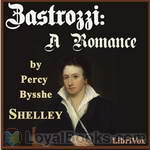 Zastrozzi, A Romance
Zastrozzi, A Romance
“Would Julia of Strobazzo’s heart was reeking on my dagger!”From the asthmatic urgency of its opening abduction scene to the Satanic defiance of the villain’s departure “with a wild convulsive laugh of exulting revenge”, this first of Shelley’s Gothic novelettes recycles much sensational boyhood reading and also points to some of his more mature concerns.It is the ego-driven pursuit of passionate extremes, revenge included, which consigns figures like Zastrozzi and the murderous Matilda to an isolation which is socially destructive as well as self-annihilating... | |
By: Percy Fitzpatrick | |
|---|---|
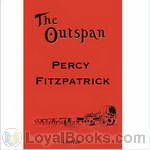 The Outspan: Tales of South Africa
The Outspan: Tales of South Africa
Six poignant short stories reminiscent of life as a transport rider in the Transvaal veld in the days of the gold rush in South Africa at the end of the 19th century. From an early age Fitzpatrick believed that life should be enjoyed to the full and his honest and often moving style of writing leaves one richer for having known him. | |
By: Percy Keese Fitzhugh (1876-1950) | |
|---|---|
 Pee Wee Harris
Pee Wee Harris
Percy Keese Fitzhugh (September 7, 1876 - July 5, 1950) was an American author of nearly 100 books for children and young adults. The bulk of his work revolves around the fictional town of Bridgeboro, New Jersey and has a scouting theme. One of his major characters was Pee-Wee Harris. The title, Pee-Wee Harris, was the first in a series of 13 Pee-Wee Harris books. Pee Wee is just that; small in stature but huge in heart and ever so loyal as a scout should be. In the first installment, Pee-Wee visits his Aunt Jamsiah and Uncle Eb in a small New Jersey backwoods village called Everdoze... | |
By: Percy Marks (1891-1956) | |
|---|---|
 The Plastic Age
The Plastic Age
The Plastic Age (1924) is a novel by Percy Marks, which tells the story of co-eds at a fictional college called Sanford. With contents that covered or implied hazing, partying, and "petting", the book sold well enough to be the second best-selling novel of 1924. The following year, it was adapted into a film of the same name, starring Clara Bow. | |
By: Peter Abelard | |
|---|---|
 The Love Letters of Abelard and Heloise
The Love Letters of Abelard and Heloise
Heloise was a strong-willed and gifted woman who was fluent in Latin, Greek and Hebrew, and came from a lower social standing than Abelard. At age 19, and living under her uncle Fulbert’s roof, Heloise fell in love with Abelard, who she was studying under. Not only did they have a clandestine affair of a sexual nature, they had a child, Astrolabe, out of wedlock. Discovered by the Fulbert (who was a Church official), Abelard was assaulted by a hired thug and castrated, and Heloise entered a convent... | |
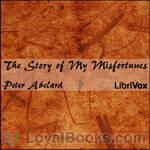 The Story of My Misfortunes
The Story of My Misfortunes
Autobiographies from remote historical periods can be especially fascinating. Modes of self-presentation vary greatly across the centuries, as of course does the very concept of Self. Peter Abelard, the medieval philosopher and composer, here gives a concise but vivid survey of his notoriously calamitous life. The work is couched in the form of a letter to an afflicted friend. Abelard’s abrasively competitive, often arrogant personality emerges at once in the brief Foreword, where he informs his correspondent: “(I)n comparing your sorrows with mine, you may discover that yours are in truth nought.. and so shall you come to bear them the more easily.” | |
By: Peter B. Kyne (1880-1957) | |
|---|---|
 The Valley of the Giants
The Valley of the Giants
The man was John Cardigan; in that lonely, hostile land he was the first pioneer. This is the tale of Cardigan and Cardigan’s son, for in his chosen land the pioneer leader in the gigantic task of hewing a path for civilization was to know the bliss of woman’s love and of parenthood, and the sorrow that comes of the loss of a perfect mate; he was to know the tremendous joy of accomplishment and worldly success after infinite labour; and in the sunset of life he was to know the dull despair of failure and ruin... | |
 The Go-Getter
The Go-Getter
A disabled veteran succeeds as a civilian with persistence and military focus. | |
By: Peter Christen Asbjørnsen (1812-1885) | |
|---|---|
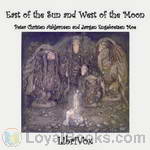 East of the Sun and West of the Moon
East of the Sun and West of the Moon
Once on a time there was a poor husbandman who had so many children that he hadn’t much of either food or clothing to give them. Pretty children they all were, but the prettiest was the youngest daughter, who was so lovely there was no end to her loveliness.So one day, ’twas on a Thursday evening late at the fall of the year, the weather was so wild and rough outside, and it was so cruelly dark, and rain fell and wind blew, till the walls of the cottage shook again. There they all sat round the fire, busy with this thing and that... | |
By: Peter H. Ditchfield | |
|---|---|
 Vanishing England
Vanishing England
VANISHING ENGLANDby P. H. DITCHFIELDINTRODUCTIONThis book is intended not to raise fears but to record facts. We wish to describe with pen and pencil those features of England which are gradually disappearing, and to preserve the memory of them. It may be said that we have begun our quest too late; that so much has already vanished that it is hardly worth while to record what is left. Although much has gone, there is still, however, much remaining that is good, that reveals the artistic skill and taste of our forefathers, and recalls the wonders of old-time... | |
By: Peter Newell (1862-1924) | |
|---|---|
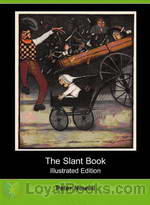 The Slant Book
The Slant Book
The Slant Book is literally the shape of a parallelogram, with the spine of the book running down one side. When opened, facing pages form a “V” shape. All the pictures on the slanted recto pages show a way-too-precocious infant in a carriage [the "go-cart" of yesteryear] racing downhill who has somehow gotten away from his nanny, gleefully creating havoc all along the way! The facing verso pages contain two stanzas of commentary on the charming –if alarming!– illustrations. This book pioneered the “special format” children’s literature of today, such as pop-up books or cutout books like Eric Carle’s The Very Hungry Caterpillar... | |
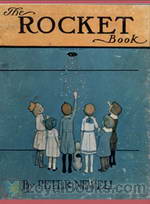 The Rocket Book
The Rocket Book
The Rocket Book begins when the son of a building superintendent sets a match to a rocket he discovered in the basement. Suddenly, the rocket blasts its way up through apartment after apartment in a high-rise, disrupting and transforming the humdrum goings-on of twenty families till it is finally stopped cold by something in the attic. An elliptical hole is punched in each of the book’s pages and illustrations to signify where the rocket passed through every apartment! As in all of Newell’s books, the verse on the verso-page provides commentary on the recto-page illustration... | |
By: Phaedrus (c. 15 BC - c. AD 50) | |
|---|---|
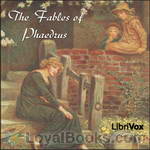 The Fables of Phaedrus
The Fables of Phaedrus
The fable is a small narrative, in prose or verse, which has as its main characteristic the aim of conveying a moral lesson (the “moral”), implicitly or, more normally, explicitly expressed. Even though the modern concept of fable is that it should have animals or inanimated objects as characters – an idea supported by the works of famous fabulists such as Aesop and La Fontaine – Phaedrus, the most important Latin fabulist, is innovative in his writing. Although many of his fables do depict animals or objects assuming speech, he also has many short stories about men, writing narratives that seem to the modern eye more like short tales than fables... | |
By: Philip Jose Farmer (b. 1918) | |
|---|---|
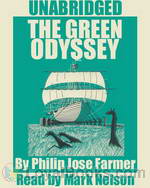 The Green Odyssey
The Green Odyssey
Alan Green is a space traveler stranded on a barbaric planet who has been taken slave and made a consort to an insipid and smelly queen. His slave-wife, though beautiful and smart, nags him constantly. He’s given up hope of ever returning to Earth when he hears of two astronauts who have been captured in a kingdom on the other side of the planet, and sets out on an action-packed journey on a ship sailing across vast grasslands on rolling pin-like wheels in a desperate scheme to save them and return home. Due to the non-renewal of its copyright, this book is in the public domain. | |
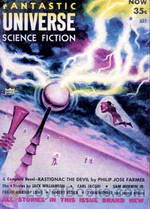 Rastignac The Devil
Rastignac The Devil
French colonists on a planet ruled by reptiles and amphibians are forced to wear living “skins” that subdue aggression and enforce vegetarianism. As children, Rastignac and his reptile friend Mapfarity force themselves to become carnivores and begin a protein fueled journey that causes Rastignac to develop a Philosophy of Violence. When a spaceship from Earth crashes in the ocean, Rastignac and company must put their philosophy to the test. - Rastignac The Devil was first published in the May 1954 issue of Fantastic Universe Magazine. | |
By: Philip K. Dick (1928-1982) | |
|---|---|
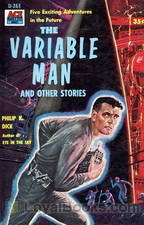 The Variable Man
The Variable Man
Predictability has come a long way. The computers of the future can tell you if you’re going to win a war before you fire a shot. Unfortunately they’re predicting perpetual standoff between the Terran and Centaurian Empires. What they need is something unpredictable, what they get is Thomas Cole, a man from the past accidently dragged forward in time. Will he fit their calculations, or is he the random variable that can break the stalemate? – The Variable Man first appeared in the September, 1953 issue of Space Science Fiction magazine. | |
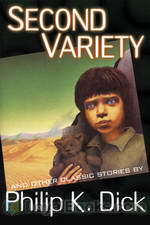 Second Variety
Second Variety
Early victories by the USSR in a global nuclear war cause the United Nations government to retreat to the moon leaving behind troops and fierce autonomous robots called “Claws”, which reproduce and redesign themselves in unmanned subterranean factories. After six bloody years of conflict the Soviets call for an urgent conference and UN Major Joseph Hendricks sets out to meet them. Along the way he will discover what the Claws have been up to, and it isn’t good… - Second Variety was first published in the May 1953 edition of Space Science Fiction Magazine. | |
 Mr. Spaceship
Mr. Spaceship
The war with the Yucks from Proxima Centauri was claimed to be a stalemate but they were really winning. The mine belts they laid seemed to propagate themselves and were slowly strangling Terran planets. How did they do that? What was their secret? The answer was baffling and the best human minds could only conclude that their ships and mines were somehow alive. So, the next desperate step was to ask "If they are using organic ships, why can't we do the same?". Thus Mr. Spaceship was conceived and carried out. But will a conscious warship do what the generals wish? Perhaps and perhaps something entirely surprising! | |
 The Crystal Crypt & Beyond the Door
The Crystal Crypt & Beyond the Door
Two early science fiction stories by the wonderful craftsman, Philip K. Dick. In the Crystal Crypt, taken from the 1954 Planet Stories, the war between Mars and Terra is about to erupt and earth has only merchants and salesmen to fight; can they carry out their mission? Beyond the Door is a story that asks and answers the question: what lives beyond the door? And is it dangerous? | |
 The Defenders
The Defenders
The terrible destruction of total nuclear war between the Western and Eastern Blocks has succeeded in sterilizing the surface of the earth. No living creature can now exist there and all humans on both sides, have fled to the hives built miles below the surface where they constantly work to produce the war materials necessary to carry on the battle. For 8 years now, the actual fighting between these super powers has been conducted by robots known as Ledeys since only they can sustain the terrible levels of radiation caused by the constant bombardment... | |
 Beyond Lies the Wub & The Skull
Beyond Lies the Wub & The Skull
Two stories in the inimitable Philip Dick style. What is a Wub? A 400 pound slovenly, fat, ungainly, drooling animal that looks like a cross between a walrus and an enormous hog? Well, yes that is pretty much what he looks like and for 50 cents, a good bargain no matter how he tastes. The hungry spaceship crew expect to find out. Of course the Wub may not entirely agree but it doesn't have much to say about it. The second story, The Skull, is a skilful mesh of time travel, unscrupulous governments, prisoners, and religion. With an assassin thrown in for good measure. Enjoy! | |
 The Eyes Have It & Tony and the Beetles
The Eyes Have It & Tony and the Beetles
Aliens have invaded the earth! Horrible one celled creatures disguised as normal human beings ! Well, at least that is what it seems to the author. Yes, The Eyes Have It is a whimsical story, making gentle fun of certain writing styles, but only a topflight science-fictionist like Philip Dick , we thought, could have written this story, in just this way. Tony and the Beetles takes place far in the future when Earth's enormous colonial empire is well established but the question is, how long can it last? 10 year old Tony grows up fast when history catches up with the human race. A sobering look at human history .. and our probable future. Two very different stories but both entertaining. | |
By: Philip Verrill Mighels (1869-1911) | |
|---|---|
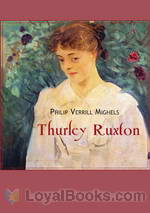 Thurley Ruxton
Thurley Ruxton
This is a rags to riches romance about an exceedingly beautiful, poor, young girl (Thurley Ruxton) who is mentored by one of New York’s elite hostesses. In order to draw them into her social circle, she allows all the famous and moneyed populous of Gothem to believe that Thurley is the princess Thurvinia hiding in New York to escape an arranged marriage. This causes all manner of high drama and romance with a suitable ending. | |
By: Philip Wylie (1902-1971) | |
|---|---|
 Gladiator
Gladiator
Gladiator by Philip Wylie is the story of a man who although normal in all other ways, through the genius of his Father a biologist attains the strength and impregnability of a superman. The problems he encounters in trying to fit into a society of normal human beings who show fear and hatred whenever they view his abnormal strength and physical ability pains him to the point of having to leave civilization. | |
By: Pieter Harting (1812-1885) | |
|---|---|
 Anno Domini 2071
Anno Domini 2071
Curious to see how the world was imagined to be 50 years from now? Harting, under the pseudonym Dr. Dioscorides, originally published his steampunk utopian novelette in 1865 under the title Anno 2065, but soon had to publish new editions because of all the changes happening at the time. We have in the catalogue the 1870 edition "Anno 2070" recorded in Dutch. This is the English translation of that edition, published in 1871, and naturally titled "Anno Domini 2071". It isn't free from racial defamation, but it does contain some radical ideas for its time, like the Suffragette movement, the Darwinian Evolution model, and many creatively imagined inventions! - Summary by Rapunzelina | |
By: Plague Ship (1912-2005) | |
|---|---|
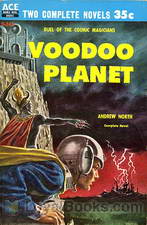 Voodoo Planet
Voodoo Planet
The sequel to Plague Ship, Voodoo Planet finds the Solar Queen banned from trade and starting her supposed quiet two-year stint as an interstellar mail carrier. But instead her crew accepts a visit to the safari planet of Khatka, where they find themselves caught in a battle between the forces of reason and the powers of Khatka’s mind-controlling wizard. | |
By: Plato (428/427 BC - 348/347 BC) | |
|---|---|
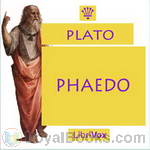 Phaedo
Phaedo
Plato's Phaedo is one of the great dialogues of his middle period, along with the Republic and the Symposium. The Phaedo, which depicts the death of Socrates, is also Plato's seventh and last dialogue to detail the philosopher's final days (the first six being Theaetetus, Euthyphro, Sophist, Statesman, Apology, and Crito).In the dialogue, Socrates discusses the nature of the afterlife on his last day before being executed by drinking hemlock. Socrates has been imprisoned and sentenced to death by an Athenian jury for not believing in the gods of the state and for corrupting the youth of the city... | |
 Apology
Apology
The Apology of Socrates is Plato's version of the speech given by Socrates as he unsuccessfully defended himself in 399 BC against the charges of "corrupting the young, and by not believing in the gods in whom the city believes, but in other daimonia that are novel" (24b). "Apology" here has its earlier meaning (now usually expressed by the word "apologia") of speaking in defense of a cause or of one's beliefs or actions (from the Ancient Greek ἀπολογία). | |
 Laws
Laws
Νόμοι (Laws) is Plato's final dialogue written after his attempt to advise the tyrant Dionysius II of Syracuse. The dialogue takes place between: an Athenian Stranger (Socrates? A god in human form?); the quiet Lacedaemonian Megillus; and the Cretan Cleinias. The Stranger asks whether humans live to be more effective at waging war or if there is something more important a legislator should seek to achieve. During their pilgrimage Cleinias discloses his role in the establishment of a new colony... | |
By: Poul Anderson (1926-2001) | |
|---|---|
 Security
Security
“Security”, tells the story of a compartmentalized government physicist ordered by secret police to complete experiments aimed at developing a new weapon. He is brought to a hidden space station and put in charge of the project but there are many questions. In a world of spies watching spies it’s sometimes hard to know what’s patriotic. -- Poul Anderson was a Golden Age Science Fiction and Fantasy author. “Security” first appeared in the magazine “Space Science Fiction” in February of 1953 | |
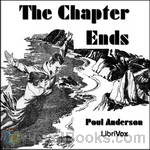 The Chapter Ends
The Chapter Ends
Far, far in the future the Earth is still spinning around the Sun, on the edge of the galaxy, dozing in obscurity, forgotten by it's trillions of progeny and completely irrelevant. But this doesn't matter to the few millions who still live there in simplicity and quiet happiness. But then interstellar politics dictates that they must all leave Earth because ... well, listen to the story as told by the great Poul Anderson as he explores what the Earth means to humans and to one man in particular. | |
By: Poul William Anderson (1926-2001) | |
|---|---|
 Sentiment, Inc.
Sentiment, Inc.
The way we feel about another person, or about objects, is often bound up in associations that have no direct connection with the person or object at all. Often, what we call a "change of heart" comes about sheerly from a change in the many associations which make up our present viewpoint. Now, suppose that these associations could be altered artificially, at the option of the person who was in charge of the process.... (from the Blurb ) | |
By: Pu Songling (1640-1715) | |
|---|---|
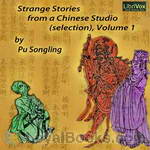 Strange Stories From a Chinese Studio
Strange Stories From a Chinese Studio
MANUAL OF SURGERY, OXFORD MEDICAL PUBLICATIONSBY ALEXIS THOMSON, F.R.C.S.Ed.PREFACE TO SIXTH EDITION Much has happened since this Manual was last revised, and many surgical lessons have been learned in the hard school of war. Some may yet have to be unlearned, and others have but little bearing on the problems presented to the civilian surgeon. Save in its broadest principles, the surgery of warfare is a thing apart from the general surgery of civil life, and the exhaustive literature now available on every aspect of it makes it unnecessary that it should receive detailed consideration in a manual for students... | |
By: Publius Ovidius Naso | |
|---|---|
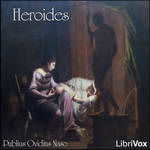 Heroides
Heroides
The Heroides, also known as the Heroines, the Letters of the Heroines or simply as Epistles are a very famous collection of poems by Ovid, not only for their interesting subject – letters by famous mythological characters addressed to their beloved ones – but also because it’s considered by some the first example of the Epistle as a literary genre – a statement made by Ovid himself in his Ars Amatoria. The book as we have it nowadays consists of 21 letters, divided in two parts. The first... | |
By: R. Austin Freeman (1862-1943) | |
|---|---|
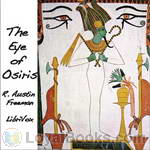 The Eye of Osiris
The Eye of Osiris
The Eye of Osiris is an early example from the Dr. Thorndyke series of detective stories written by R. Austin Freeman. In these stories, the author drew on his extensive medical and scientific knowledge for his main character, a medico-legal expert who relies on forensic evidence and logical deduction in solving cases. In this case, Thorndyke steps in to investigate the disappearance of one John Bellingham, an English gentleman and amateur Egyptologist, who has vanished under very mysterious circumstances... | |
 The Mystery of 31 New Inn
The Mystery of 31 New Inn
Jeffrey Blackmore suspiciously made two wills, both deceptively alike, but still, in a cunning way, completely different. John Thorndyke, equally cunning and smart, smells something fishy. With stylish cool and logic, he leads the story up to its marvelous and fully credible climax. | |
 The Red Thumb Mark
The Red Thumb Mark
Missing diamonds, untouched safe, two blood smeared thumb prints and a mysterious Mr X. If these are present, Dr Thorndyke must be there too. Will he be able to solve this case?The Red Thumb Mark is the first novel of Freeman’s best-selling Thorndyke series. | |
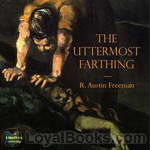 The Uttermost Farthing
The Uttermost Farthing
Humphrey Challoner is a solitary old man who spent a lifetime collecting for his private museum, primarily mammals exhibiting osteological abnormalities but also 24 articulated human skeletons without any apparent defect. His friend, Dr. Wharton, is puzzled by the collection, but he humors Challoner's eccentricities and tends to him in his final illness. When Wharton inherits the collection on Challoner's death, the dark mystery that ties the collection together is finally revealed. | |
 Singing Bone or The Adventures of Dr. Thorndyke
Singing Bone or The Adventures of Dr. Thorndyke
In its original form, this book was published with the title, "The Singing Bone." It was later republished as "The Adventures of Dr. Thorndyke." This book has historical significance as it contains the first example of the inverted detective formula used in The Case of Oskar Brodski , along with several other examples. | |
 Silent Witness
Silent Witness
In this detective novel, the young doctor Humphrey Jardine stumbles upon a corpse during a walk near Hampstead Heath in the middle of the night. However, when he returns to the spot with a police officer, the corpse has disappeared. And this is just the start of a series of strange and sometimes life threatening events. Had it really been a dead man he had seen? And if so, who was it? And what is the role of the mysterious Mrs. Samway, who keeps popping up wherever he goes? He will need the help of Dr... | |
By: Rabindranath Tagore | |
|---|---|
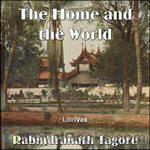 The Home and the World
The Home and the World
Rabindranath Tagore (1861–1941), also known by the sobriquet Gurudev, was a Bengali poet, Brahmo religionist, visual artist, playwright, novelist, and composer whose works reshaped Bengali literature and music in the late 19th and early 20th centuries. He became Asia’s first Nobel laureate when he won the 1913 Nobel Prize in Literature. The Home and the World is a 1916 novel, set in the estate of the rich Bengali noble Nikhil. He lives happily with his beautiful wife Bimala until the appearance of his friend and radical revolutionist, Sandip... | |
 Mashi and Other Stories
Mashi and Other Stories
A collection of short stories written iin English by the Nobel prize winning Bengali writer. | |
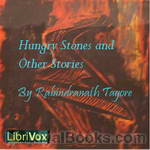 The Hungry Stones and Other Stories
The Hungry Stones and Other Stories
This is a collection of short stories written by the Nobel Laureate Rabindranath Tagore. The stories contained in this volume were translated by several hands. The version of The Victory is the author's own work. The seven stories which follow were translated by Mr. C. F. Andrews, with the help of the author's help. Assistance has also been given by the Rev. E. J. Thompson, Panna Lal Basu, Prabhat Kumar Mukerjii, and the Sister Nivedita. | |
By: Rafael Sabatini (1875-1950) | |
|---|---|
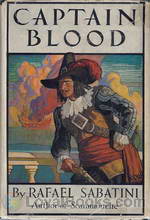 Captain Blood
Captain Blood
An adventure novel with an unexpected hero, Captain Blood follows the unintended journey of chivalrous and well-educated gentleman Peter Blood, who without much choice was plunged into the world of piracy forcing him to leave his tranquil lifestyle behind. Sabatini first introduced his protagonist in a series of eight short stories published in magazine installments, until later weaving them together in 1922 as a novel. Set in the late 17th century, the novel begins with the image of Peter Blood, a physician, casually attending his geraniums and smoking a pipe... | |
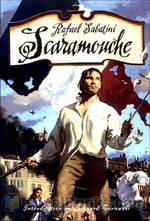 Scaramouche
Scaramouche
“He was born with a gift of laughter and a sense that the world was mad!” The wonderful opening lines of this 1921 novel set the tone for the rest of this delightful story of an adventurer and romantic who dons several roles in his colorful life. Scaramouche by Rafael Sabatini is an historical novel set in the turbulent times of the French Revolution. The plot describes Andre-Louis Moreau, a young lawyer adopted by his godfather who cannot reveal his parentage. Moreau inadvertently stumbles into political events and becomes a wanted man based on the evil machinations of a sinister Marquis... | |
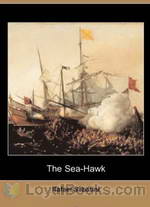 The Sea Hawk
The Sea Hawk
First published in 1915, The Sea Hawk follows the adventures of its protagonist Sir Oliver Tressilian, as he is unjustly betrayed and left to the mercy of others by his selfish brother, who seeks only to save his own skin no matter the cost. Exploring various themes including betrayal, vengeance, sacrifice, injustice, and tormented love, the novel successfully demonstrate Sabatini’s exceptional flair for adventure. Set in the late 16th century, the tale begins with the introduction of Sir Oliver Tressilian, a wealthy gentleman who lives together with his brother Lionel, haunted by his family’s bad-tempered reputation... | |
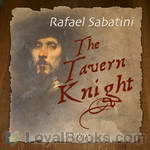 The Tavern Knight
The Tavern Knight
Follow the exploits of Sir Crispin Galliard, also known as The Tavern Knight, in his defence of the King of England against Cromwell and his Puritan Entourage. | |
By: Ralph Connor | |
|---|---|
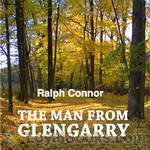 The Man from Glengarry
The Man from Glengarry
With international book sales in the millions, Ralph Connor was the best-known Canadian novelist of the first two decades of the Twentieth Century. The Man from Glengarry was his most popular and accomplished work. Immediately after its publication in 1901, the novel spent several months in the top ranks of the New York Times "Books in Demand" list.We follow the story of Ranald Macdonald, who is shaped by family and community in rural eastern Ontario in the early decades after Canadian confederation... | |
 Glengarry School Days
Glengarry School Days
With international book sales in the millions, Ralph Connor was the best-known Canadian novelist of the first two decades of the Twentieth Century. Glengarry School Days (1902), hugely popular in its time, is based on his memories of growing up in rural Ontario around the time of Canadian confederation. Although Connor saw himself as writing moral fiction for adults, generations of younger readers have also enjoyed these affectionate and gently amusing sketches, and excerpts from Glengarry School Days have appeared in school anthologies. | |
By: Ralph Henry Barbour (1870-1944) | |
|---|---|
 Winning His Game
Winning His Game
Dudley Baker is new to Grafton School. Like many rookie students he finds himself feeling out of place amongst the strange new faces he encounters there. With the help of his roommate, Jimmy Logan, he attempts to overcome his insecurities and become a popular member of school society. Struggling with these attempts he finds redemption in the game of baseball and strives to make an indelible impact in sport. Of course many interesting adventures ensue! - Summary by Howard Skyman | |
 Secret Play
Secret Play
Clearfield High School football team has no coach. Its players will have to search for a new one, and get ready for the next football season and its decisive game against Springfield, its most important adversary. | |
By: Ralph Waldo Emerson | |
|---|---|
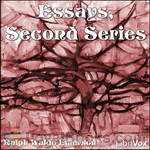 Essays, Second Series
Essays, Second Series
Ralph Waldo Emerson (1803 – 1882) was an American essayist, philosopher, and poet, best remembered for leading the Transcendentalist movement of the mid 19th century. His teachings directly influenced the growing New Thought movement of the mid-1800s. | |